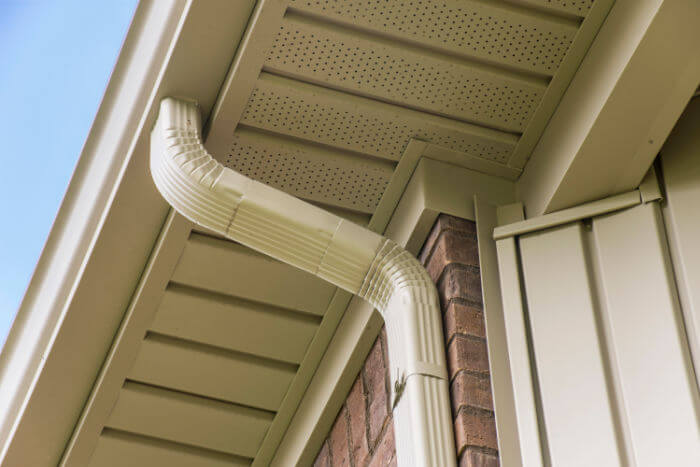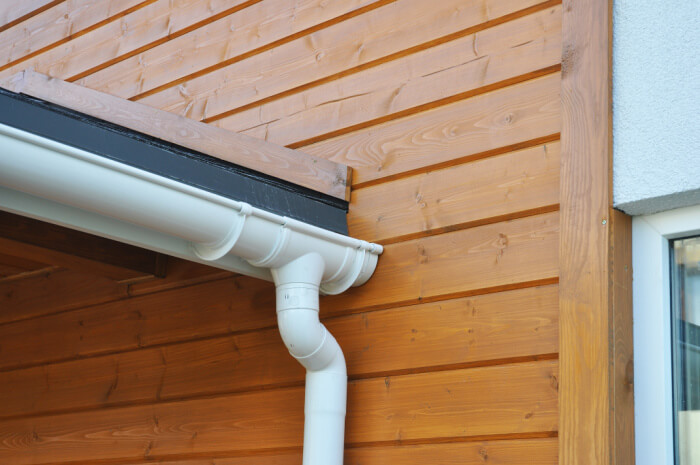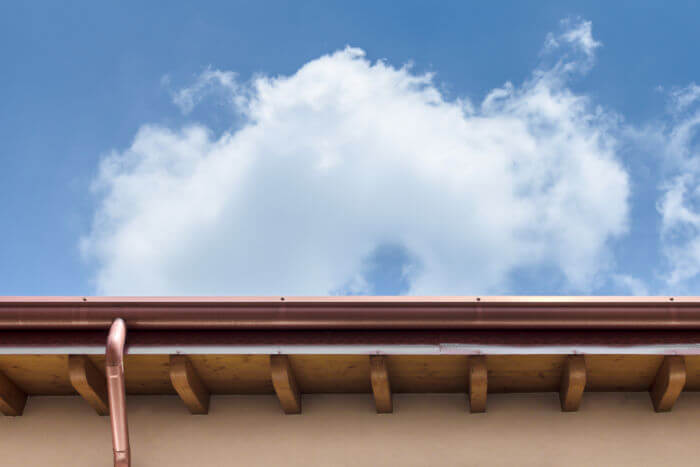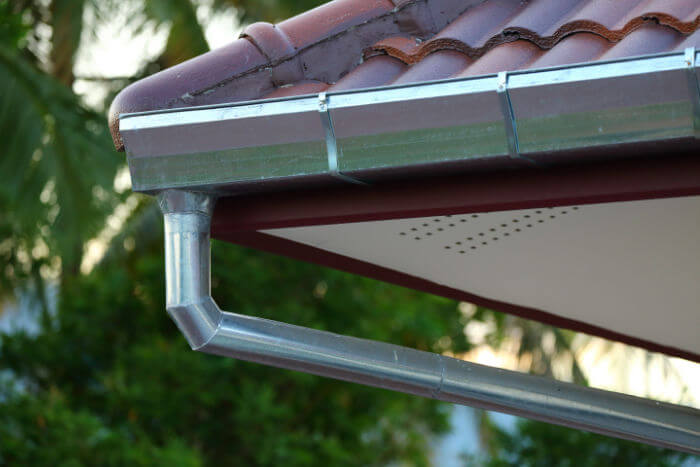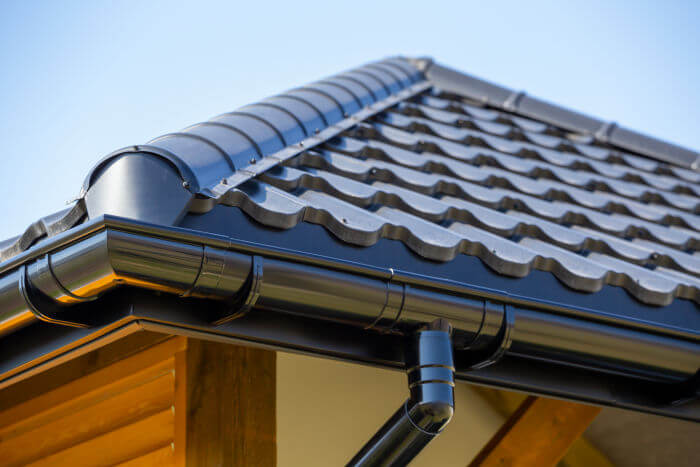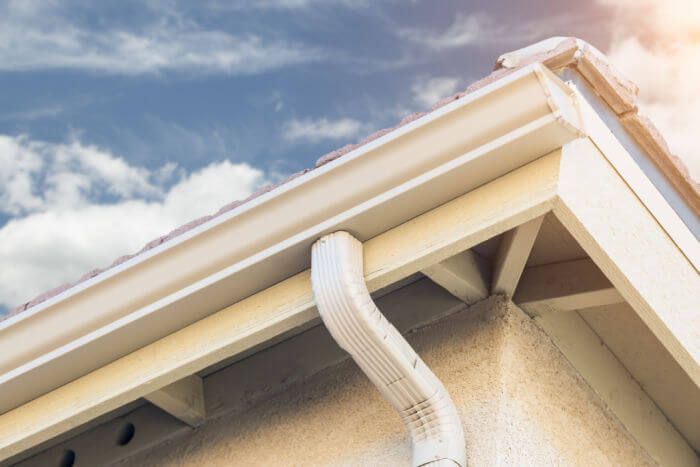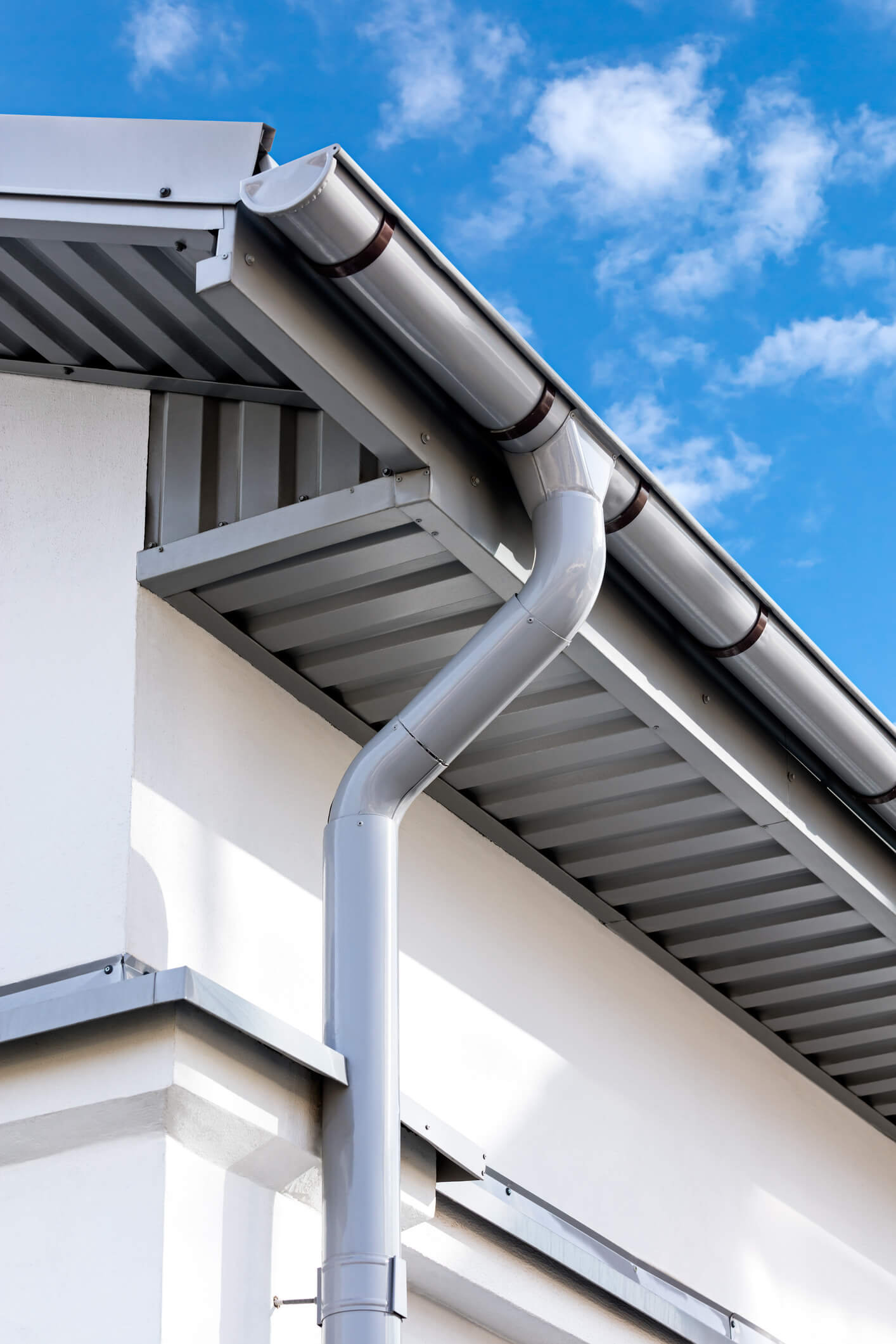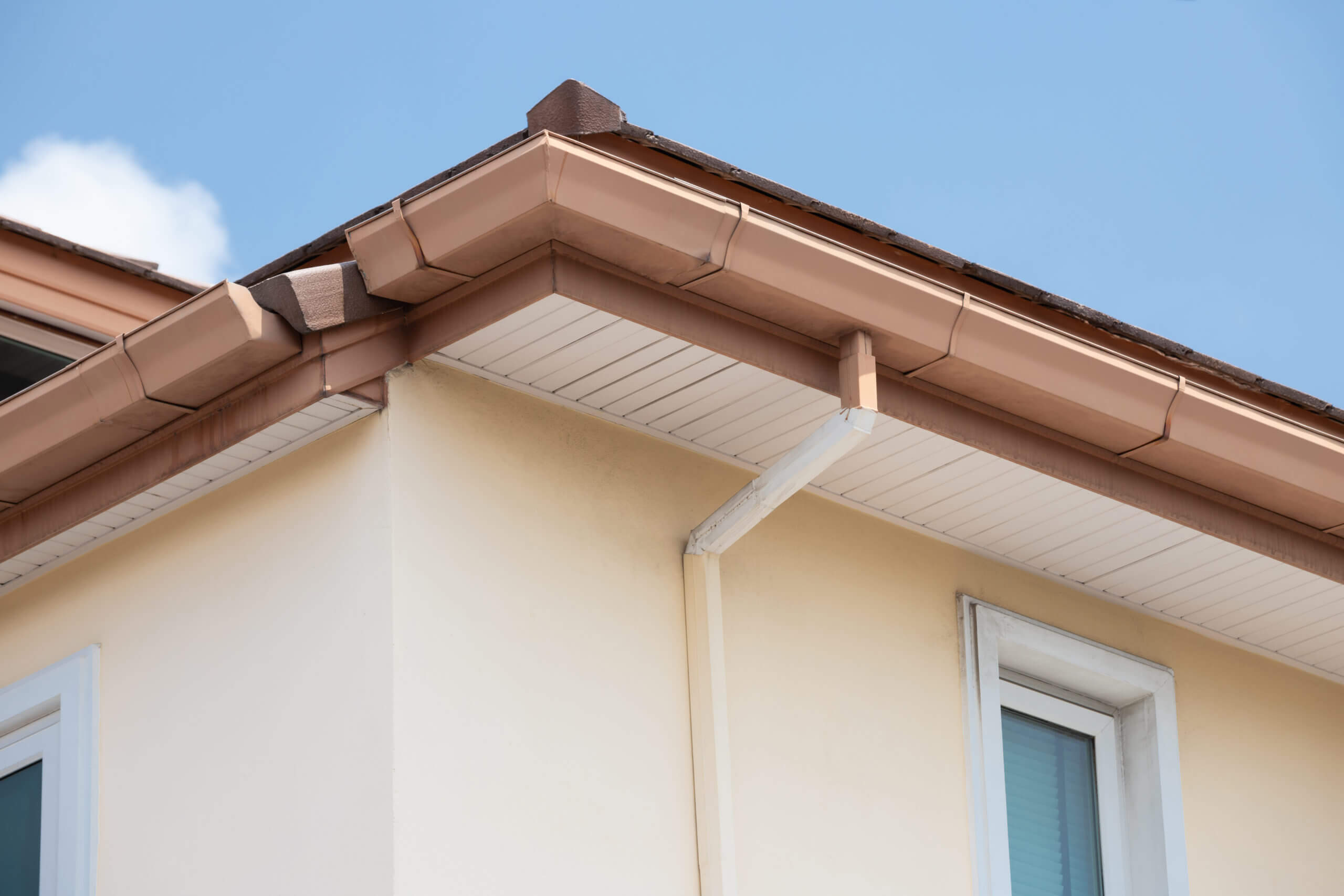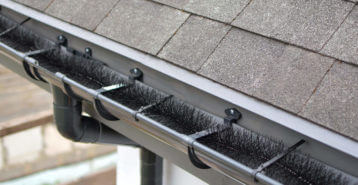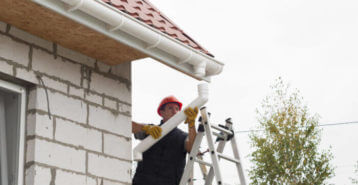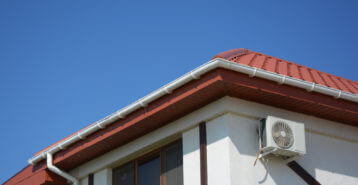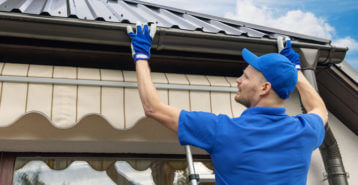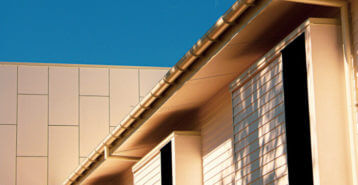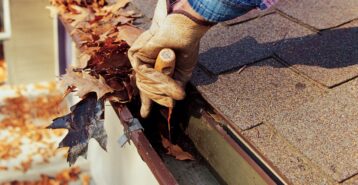Choosing the Best Gutter Type
To maintain a secure and weather-resistant home, you must consider several elements, and one crucial aspect is your gutter system. Gutters protect your home from water damage, making it essential to choose the right type of gutter for longevity, durability, and efficiency. The best styles depend on your local weather conditions, the aesthetics of your home, and the materials that suit your needs. In this comprehensive guide, we will explore the different gutter types available on the market. We will discuss the materials and styles, explain how they work, and outline the pros and cons of each option. You’ll also find information on pricing and maintenance tips to help your gutters perform at their best.
Types of Gutters
The material of your gutters greatly affects their longevity, strength, durability, weather resistance, and cost. Common gutter materials include aluminum, steel, copper, zinc, and vinyl.
Investing in a durable gutter system can prevent costly repairs and damage to your home down the line. Remember, the amount of rain and snow your area receives influences not just the best material but also the size of the gutters needed and their maintenance requirements.
Aluminum Gutters
Aluminum gutters rank as the most popular choice for rain gutters in U.S. homes due to their easy installation and low cost. This lightweight material comes in various colors, and you can paint it as needed. Aluminum gutters resist rust, withstand extremely cold temperatures, and endure inclement weather.
However, the curb appeal of aluminum can diminish over time. Aluminum dents and bends easily, though thicker options are available to help reduce these concerns. You may find that recycled aluminum bends more easily than sturdier options.
Homeowners can expect to pay between $8.80 and $27.90 per linear foot for aluminum gutters. The national average cost per linear foot for aluminum gutters is $18.35. With proper maintenance, aluminum gutters last approximately 20 to 25 years.
Vinyl Gutters
Vinyl gutters are affordable and easy to install and have become very popular among homeowners. This type of gutter comes in a limited variety of colors. However, they can be painted if you cannot find a color that matches the look of your home.
On the downside, vinyl is a lightweight material that can bend, crack, or sag during heavy rain, snow, or winds. Vinyl gutters also may become brittle in extreme hot or cold weather. For these reasons, they are slightly less durable compared to aluminum gutters.
Despite these drawbacks, vinyl has grown in popularity thanks to its low average cost of $6.33 to $32.40 per linear foot. The national average cost to install vinyl gutters is just $19.37. This material is expected to last 15 to 20 years, though certain weather conditions can reduce their lifespan.
Copper Gutters
Steel Gutters
Steel gutters are a mid-range price option for homeowners. They provide increased durability compared to aluminum and vinyl gutters, thanks to their zinc coating.
You can choose from various types of steel gutters, including stainless steel, galvanized steel, and Galvalume, which combine aluminum and zinc. Each type is incredibly strong and weather-resistant, but keep in mind that galvanized steel may experience rust after 10 to 15 years due to oxidation.
One potential downside is that steel gutters are heavier than other options. This added weight can complicate installation and put extra strain on your home’s roof.
Installation costs for steel gutters range from $8.80 to $36.90 per linear foot, depending on the coating type. The national average installation cost for steel gutters is $22.85 per linear foot. Considering their price and strong weather resistance, steel gutters can be a worthwhile investment.
Be aware that pure stainless steel gutters can cost as much as $37 per linear foot. Steel gutters typically last at least 20 years, and Galvalume options can last even longer.
Zinc Gutters
Types of Gutter Styles
All gutters are designed to protect your home from structural damage by directing rainwater and snowfall away from your house. However, not every type of gutter and gutter style is the right choice for every type of home.
There are three major styles of gutters — K-style, half-round, and custom fascia.
K-Style Gutters
Over the last 50 years, K-style gutters have been the most common type of gutters among homeowners. These gutters, which resemble the letter K when you look at them from a side view, tend to hold more water than other types of gutters. This is due to their unique shape — which also makes them less likely to leak or bend with added weight from rainwater. They give off the appearance of crown molding near your home’s roofing.
- Materials: K-style gutters are typically made from aluminum but are also available in vinyl, copper, or galvanized steel.
- Sizes: They range from 5 to 8 inches wide, with 5 or 6 inches being the most common for residential homes. Larger homes may require wider gutters.
- Seamless: The most common type, seamless K-style gutters, usually come in 10 to 20-foot sections and can be easily installed by professional contractors.
- Higher Water Capacity: K-style gutters can hold more water than half-round gutters due to their design, making them suitable for homes in storm-prone areas.
- Easy Installation: Their flat side allows K-style gutters to attach directly to fascia boards, eliminating the need for multiple brackets and simplifying the installation process.
- Possible Debris Accumulation: Without gutter guards, leaves and debris can collect in K-style gutters, necessitating cleaning at least twice a year to prevent clogs that could damage your home.
- Not Ideal for Older Homes: The angular shape of K-style gutters may clash with the rounded appearance of older homes, potentially detracting from their aesthetic appeal.
K-style gutters are the best choice for those who have angular roofs. This adds to their popularity since that is the most common type of roof installed on homes in the United States.
Half-Round Gutters
Half-round gutters, which look like a tube that has been cut in two, are an excellent choice for homes that were built prior to the 1950s with more rounded features. They are also commonly used on modern homes that do not have angular roofs (which best accommodate K-style gutters), or feature brick or natural stone siding.
The shape of half-round gutters allows them to catch water without trapping it inside crevices. Half-round gutters also tend to corrode less than k-style gutters, since the interior is smoother, and are also easier to clean.
Custom Fascia Gutters
Custom-built fascia gutters offer a unique look, though they’re less common in U.S. homes. Typically 5 to 7 inches wide, they are ideal for larger homes and efficiently divert water due to their larger surface area. These seamless, rectangular gutters enhance your home’s exterior with a stylish, contemporary appearance.
Gutter Styles: Maintenance Differences
All gutters need to be maintained to some degree, usually at least twice a year. However, the way you need to clean and maintain your gutters will be different based on the type of gutter system you choose. The following are best practices for cleaning each style of gutter.
K-Style Gutter Maintenance
To clean K-style gutters, you will need outdoor work gloves and a ladder. First, identify areas where leaves and other debris have accumulated. Then:
- Use a small shovel or your hands (with gloves) to clear those areas of gutters manually.
- After clearing the debris, clean the inside of the gutters by pouring a solution of 1 part bleach and 2 parts water directly down them to remove any dirt that has accumulated inside. Continue this process on each section of your gutters.
- Then, go back and spray the gutters with hose water to remove dirt and bacteria left inside. Point the hose in the direction of the downspouts so that the water drains properly.
- In addition, when cleaning your gutters, look out for signs of damage to sections and repair them right away before these areas compromise your entire gutter system.
Remember that K-style gutters often clog more easily than half-round gutters, especially during storms. If you have K-style gutters, it is a good idea to prep your gutters ahead of storm season to lessen damage and maintenance needs.
Half-Round Gutter Maintenance
Maintaining half-round gutters requires similar attention to detail as other types. Follow these steps to ensure they remain in good condition.
- Remove Debris: Start by removing leaves and debris from inside the gutters. You can use a spatula or your hands (wearing work gloves). For hardened debris, a putty knife works well.
- Check for Leftover Particles: After clearing the debris, double-check the area to ensure no particles are left inside.
- Examine Downspouts: Look for clogs at the downspout entries and elbow joints. Use tongs to remove any debris you find.
- Check for Damage: Inspect your gutters for any damage. If you notice small issues, use sealant to repair the broken sections. However, if the damage is extensive, you will need to replace those parts.
- Reinforce Sagging Areas: If parts of your gutters sag slightly, reinforce them with metal brackets.
- Seek Professional Help: If the sagging persists or if you’re unsure how to fix it, contact a gutter contractor. Addressing these issues promptly can prevent further damage.
Fascia Gutter Maintenance
Fascia gutters are deeper than other types of gutters, so they are more challenging to clean. Make sure to remove leaves, needles, and other debris from your gutters so they do not get clogged.
For custom fascia gutters, it is best to hire a professional to clean your gutters to ensure it is done properly, and that any damage is repaired immediately.
Finding a Professional Gutter Installer
Are you thinking of replacing, repairing, or upgrading your gutter system? It is a good idea to hire a professional gutter contractor to complete this project. A professional will be able to advise you on which type of gutters are best for your home and ensure the installation is done properly.
Compare top-rated gutters pros in your area.
Read real homeowner reviews, explore qualifications, and view promotions. Modernize makes it easy to browse professionals and find one that will be perfect for your project.

